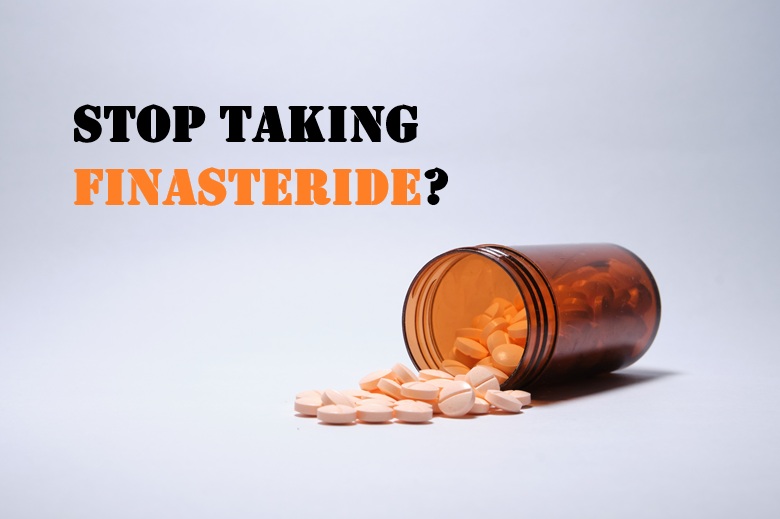
If you’ve been using finasteride to combat hair loss, you’re definitely not alone. It’s one of the top prescribed treatments for male pattern baldness, backed by clinical studies. But whether you’ve been on it for several months or even years, you might be curious about: What actually happens if I stop taking it?
It’s a valid question—and it deserves a straightforward answer.
Let’s break down how finasteride works, what happens when it’s no longer in your system, and the factors you should consider if you’re thinking about taking a break or stopping altogether.
Quick Recap: What Does Finasteride Do?
Finasteride is a medication that blocks DHT, a hormone that shrinks hair follicles in men with genetic sensitivity, leading to thinner hair, shorter growth cycles, and eventually, baldness.
By blocking the enzyme that changes testosterone into DHT, finasteride helps to:
- Slow down or stop hair loss
- Maintain the hair you have
- Encourage new growth in some areas with active follicles
You usually take it as a 1mg tablet daily, and it works best with consistent use over time.
So, What If You Stop?
Here’s the deal: if you stop taking finasteride, your body’s DHT levels will gradually return to what they were before treatment.
Typically, this takes a few weeks. As DHT levels rise, the benefits finasteride provided—like slowing or halting hair follicle shrinkage—start to diminish.
Here’s what might happen:
This is the most likely outcome. Without the medication to keep DHT low, your genetic hair loss pattern resumes.
What that could look like:
- Shedding might increase within a few months
- Hair thickness could reduce again—especially around the temples and crown
- Any regrowth seen on finasteride might reverse over 6–12 months
If you’ve been on finasteride for over a year and then stop, the difference may be more noticeable since you’ll be comparing managed hair loss to unmanaged.
- You’ll Likely Return to Your “Baseline”
Finasteride doesn’t make permanent changes to your hair or scalp—it just puts hair loss on pause while you take it. Once you stop, the biological process picks up where it left off.
Think of it like pressing a pause button, not rewinding. Without it, everything resumes again.
That said, you won’t instantly go bald. Hair loss is gradual, and some men might keep their results for several months before seeing major shedding again.
Some men stop finasteride due to concerns about side effects, like:
- Low libido
- Erectile dysfunction
- Mood swings
These side effects are uncommon (around 1-2% of users experience them), and they usually go away after stopping the medication. If you had side effects and choose to stop, they typically resolve in a few weeks as the drug leaves your system.
If side effects are a worry, speak to a healthcare professional. There could be other dosing strategies or combinations that minimize side effects while managing hair loss.
- You May Experience “Catch-Up” Shedding
Some guys report a rapid phase of shedding months after stopping finasteride. This isn’t the medication causing hair loss—it’s your condition ramping up again.
Follicles that were safeguarded by finasteride are no longer protected from DHT, possibly leading to noticeable hair density drops.
Although “catch-up shedding” can be disheartening, remember it’s part of the natural progression of male pattern baldness, not a result of stopping treatment.
Things to Consider Before Stopping
- Are you seeing good results? If the treatment’s working and you’re side-effect free, think about how stopping might affect your confidence and hair over the next year to a year and a half.
- Have you tried other options? Some men switch to topical DHT blockers or combine lower-dose finasteride with minoxidil. Sons offers medical experts who can guide you through other options if you’re unsure.
- Are you ready for change? Stopping doesn’t equal failure—it just means changing your approach. Some men are okay with letting nature take its course, while others explore surgical or cosmetic options.
Can You Restart Finasteride Later?
Absolutely—finasteride can be started again after stopping. However, you might lose some progress, and getting all of it back might not happen when restarting.
That’s why consistency from the beginning is often best. If you’re unsure about your long-term plan, talk to a professional for a treatment strategy that suits your lifestyle.
Final Thoughts: It’s Your Call—But Make It Informed
Finasteride isn’t a lifelong commitment for everyone. But if it’s working for you, you’re handling it well, and want to keep your hair, understand what’s at stake when considering stopping.
It’s a personal choice. Like all health decisions, it’s best made with facts—not fear.
At Sons, you can chat with medical professionals who’ll help you weigh your options, assess your hair loss stage, and recommend the best approach—whether it’s continuing finasteride, adjusting your plan, or trying something new.
Whatever you choose, it starts with the right conversation.
